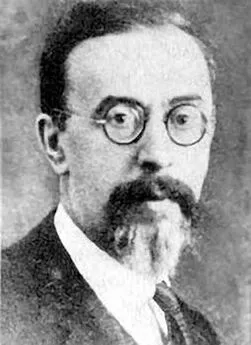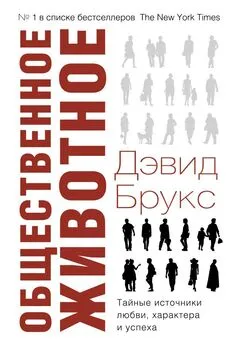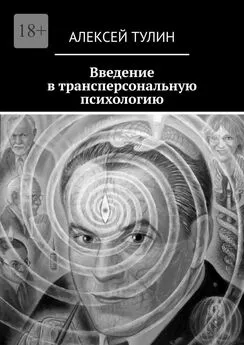Эллиот Аронсон - Общественное животное. Введение в социальную психологию
- Название:Общественное животное. Введение в социальную психологию
- Автор:
- Жанр:
- Издательство:неизвестно
- Год:неизвестен
- ISBN:нет данных
- Рейтинг:
- Избранное:Добавить в избранное
-
Отзывы:
-
Ваша оценка:
Эллиот Аронсон - Общественное животное. Введение в социальную психологию краткое содержание
Общественное животное. Введение в социальную психологию - читать онлайн бесплатно полную версию (весь текст целиком)
Интервал:
Закладка:
26. Russell, G. (1981). Spectator moods at an aggressive sports event. Journal of Social Psychology, 3,217-227.
27. Feshbach, S. (1955). The drive-reducing function of fantasy behavior. Journal of Abnormal and Social Psychology, 50, 3-11.
28. Hokanson, J., amp; Burgess, M. (1962). The effects of three types of aggression on vascular process. Journal of Abnormal and Social Psychology, 64, 446-449.
29. Geen, R., amp; Quanty, M. (1977). The catharsis of aggression: An evaluation of the hypothesis. In L.Berkowitz (Ed.), Advances in experimental social psychology (Vol. 10, pp. 1-36). New York: Academic Press.
30. Geen, R., Stonner, D., amp; Shape, G. (1975). The facilitation of aggression by aggression: A study in response inhibition and disinhibition. Journal of Personality and Social Psychology, 31, 721-726.
31. Ebbesen, E., Duncan, В., amp; Konecni, V. (1975). Effects of content on verbal aggression: A field experiment. Journal of Experimental and Social Psychology, II, 192-204.
32. Glass, D. (1964). Changes in liking as a means of reducing cognitive discrepancies between self-esteem and aggression. Journal of Personality, 32, 531-549. Davis, K.E., amp; Jones, E.E. (1960). Changes in interpersonal perception as a means of reducing cognitive dissonance. Journal of Abnormal and Social Psychology, 61, 402- 410. CM. также: Buss, A.H. (1963). Physical aggression in relation to different frustrations. Journal of Abnormal and Social Psychology, 67, 1-7.
33. Kahn, M. (1966). The physiology of catharsis. Journal of Personality and Social Psychology, 3, 278-298. CM. также: Berkowit^, L., Green, J., amp; Macauley, J. (1962). Hostility catharsis as the reduction of emotional tension. Psychiatry, 25, 23-31; и DeCharms, R., amp; Wilkins, E.J. (1963). Some effects of verbal expression of hostility. Journal of Abnormal and Social Psychology, 66, 462-4.70.
34. Doob, A.N., amp; Wood, L. (1972). Catharsis and aggression: The effects of annoyance and retaliation on aggressive behavior. Journal of Personality and Social Psychology, 22,156-162.
35. Freud, Why war?, p. 282.
36. Archer, D. amp; Gartner, R. (1976). Violent acts and violent times: A comparative approach to postwar homicide rates. American Sociological Review, 41, 937-963.
37. Lorenz, On aggression. Menninger, Recreation and mental health.
38. Klapper, J. (1960). The effects of mass communication. Glencoe, IL: Free Press.
39. Bandura, A., Ross, D., amp; Ross, S. (1961). Transmission of aggression through imitation of aggressive models. Journal of Abnormal and Social Psychology, 63, 575- 582. Bandura, A., Ross, D., amp; Ross, S. (1963). A comparative test of the status envy, social power, and secondary reinforcement theories of identiFicatory learning. Journal of Abnormal and Social Psychology, 67, 527-534. Bandura,A., Ross, D., amp; Ross, S. (1963). Vicarious reinforcement and initiative learning. Journal of Abnormal and Social Psychology, 67,601-607.
40. Gerbner, G., Gross, L., Signorielli, N., amp; Morgan, M. (1980). Television violence, victimization, and power. American Behavioral Scientist, 23, 705-716. Gerbner, G., Gross, L., Morgan, M., amp; Signorielli, N. (1986). Living with television: The dynamics of the cultivation process. In J. Bryant and D. Zillman (Eds.), Perspectives on media effects (pp. 17-40). Hilisdale, NJ: Eribaum.
41. Liebert, R., amp; Baron, R. (1972). Some immediate effects of televised violence on children's behavior. Developmental Psychology, 6, 469-475.
42. Parke, R., Berkowitz, L., Leyens, J., West, S., amp; Sebastian, R. (1977). Some effects of violent and nonviolent movies on the behavior of juvenile delinquents. In L. Berkowitz (Ed.), Advances in experimental social psychology (pp. 135-172). New York: Academic Press.
43. Eron, L.R., amp; Huesmann, R. (1980). Adolescent aggression and television. Annals of the New York Academy of Sciences, 347, 319-331.
44. Huesmann, R., Lagerspetz, K., amp; Eron, L. (1984). Intervening variables in the TV violence-aggression relation: Evidence from two countries. Developmental Psychology, 20, 746-775.
45. Eron, L., amp; Huesmann, L.R. (1986). The role of television in the development of prosocial and antisocial behavior. In D. Olweus, J. Block, and M. Radke-Yarrow (Eds.), Development of antisocial and prosocial behavior: Research, theories, and issues (pp. 285-314). Orlando, FL: Academic Press.
46. Josephson, W.D. (1987). Television violence and children's aggression: Testing the priming, social script, and disinhibition prediction. Journal of Personality and Social Psychology, 53,882-890.
47. Thomas, M.H., Norton, R., Lippincott, E., amp; Drabman.R. (1977). Desensitization to portrayals of real-life aggression as a function of exposure to television violence. Journal of Personality and Social Psychology, 35, 450-458.
48. См. недавний обзор исследований по данному вопросу: Phillips.D.P.
(1986). Natural experiments on the effects of mass media violence on fatal aggression: Strengths and weaknesses of a new approach. In L. Berkowitz (Ed.), Advances in experimental social psychology (Vol. 19, pp. 207-250). Orlando, FL: Academic Press.
49. Phillips, D.P. (1983).The impact of mass mediaviolence on U.S.homicides. American Sociological Review, 48, 560-568.
50. Phillips, D.P. (1986).Natural experiments on the effects of mass mediavio-lence on fatal aggression: Strengths and weaknesses of a new approach. In L. Berkowitz (Ed.), Advances in experimental social psychology (Vol. 19, pp. 207-250). Orlando, FL: Academic Press.
51. The violence bag. (1971, December 13). Newsweek, p. 110,
52. Drop that gun, Captain Video. (1975, March 10). Newsweek, pp. 81-82.
53. Harbert, Т. (1993). Interview with Charlie Rose, PBS.
54. Diener, E., amp; Defour, D. (1978). Does television violence enhance program popularity? Journal of Personality and Social Psychology, 36, 333-341.
55. Federal Bureau of Investigation. (1990). Uniform Crime Reports for the United States. Washington, D.C.: Government Printing Office.
56. Malamuth, N.M. (1983). Factors associated with rape as predictors of laboratory aggression against women. Journal of Personality and Social Psychology, 45, 432- 442. Malamuth, N.M. (1986). Predictors of naturalistic sexual aggression. Journal of Personality and Social Psychology, 50, 953-962.
57. Donnerstein, E. (1980). Aggressive erotica and violence against women. Journal of Personality and Social Psychology, 39, 269-277.
58. Malamuth N. (1981). Rape fantasies as a function of exposure to violent sexual stimuli. Archives of Sexual Behavior, 10, 33-47.
59. Malamuth, N., amp; Check, J. (1981). The effects of mass media exposure on acceptance of violence against women: A field experiment. Journal of Research in Personality, 15, 436-446.
60. Foa, P. (1978). What's wrong with rape. In M. Vetterling-Broggin, F. Ellison, and J. English (Eds.), Feminism and philosophy (p. 355). Totowa, NJ: Littlefield Adams.
61. Malamuth, N., Haber, S., amp; Feshbach, S. (1980). Testing hypothesis regarding rape: Exposure to sexual violence, sex differences, and the ‹normality› of rapists. Journal of Research in Personality, 14, 121-137.
62. Check, J., amp; Malamuth, N. (1983),Can there be positive effects of participation in pornography experiments? Journal of Sex Research, 20, 14-31,
63. Linz, D., Donnerstein, E., amp; Penrod, S. (1988). Effects of long-term exposure to violent and sexually degrading depictions of women. Journal of Personality and Social Psychology, 55,758-768.
64. Barker, R., Dembo, Т., amp; Lewin, K. (1941). Frustration and aggression: An experiment with young children. University of Iowa Studies in Child Welfare, 18, 1-314.
65. Harris, M. (1974). Mediators between frustration and aggression in a Field experiment. Journal of Experimental and Social Psychology, 10, 561-571.
66. Kulik, J., amp; Brown, R. (1979). Frustration, attribution ofbiame, and aggression. Journal of Experimental and Social Psychology, 15, 183-194.
67. Tocqueville, A. ^(1981). Democracy in America. Westminster, MD: Random House. Рус. пер. - Токвиль А. Демократия в Америке. M.: Прогресс, 1992.
68. Mallick, S., amp; McCandless, В. (1966). A study of catharsis of aggression. Journal of Personality and Social Psychology, 4, 591-596.
69. Johnson, Т.Е., amp; Rule, B.G. (1986). Mitigating circumstances information, censure, and aggression. Journal of Personality and Social Psychology, 50, 537-542.
70. Josephson, W.L. (1987). Television violence and children's aggression: Testing the priming, social script, and disihibition predictions. Journal of Personality and Social Psychology, 53,882-890.
71. Berkowitz, L. (1965). Some aspects of observed aggression. Journal of Personality and Social Psychology, 2, 359-369.
72. Berkowitz,L., amp; Geen, R. (1966). Film violence and the cue properties of available targets. Journal of Personality and Social Psychology, 3, 525-530.
73. Berkowitz, L., amp; LePage, A. (1967). Weapons as aggression-eliciting stimuli, Journal of Personality and Social Psychology, 7, 202-207.
74. Berkowitz, L. (1971). Control of aggression (p. 68). Unpublished.
75. Zimbardo, P. (1969). The human choice: Individuation, reason, and order versus deindividuation, impulse, and chaos. In W. Arnold and D. Levine (Eds.), Nebraska Symposium on Motivation, 17, 237-307.
76. Mullen, В. (1986). Atrocity as a function of lynch mob composition: A self-attention perspective. Personality and Social Psychology Bulletin, 12, 187-197.
77. Clark, К. (1971). The pathos of power: A psychological perspective. American Psychologist, 26,1047-1057.
78. Aristotle (1954). Rhetoric. In W.R. Roberts (Trans.), Aristotle, rhetoric and poetics (p. 22). New York: Modern Library. Рус. пер. - ‹Риторика Аристотеля›.
79. Sears, R., Maccoby, E., amp; Levin, H. (1957). Patterns of child rearing. Evanston, IL: Row, Peterson. Baumrind, D. (1966). Effects of authoritative parental control on child behavior. Child Development, 37, 887-907. Becker, W. (1964). Consequences of different kinds of parental discipline. In M.L.Hoffman and L.W.Hoffman (Eds.), Review of Child Development Research (Vol. 1). New York: Russell Sage. Owens, D., amp; Straus, M. (1975). The social structure of violence in childhood and approval of violence as an adult. Aggressive Behavior, 1, 193-211.
80. Hamblin, R., Buckholt, D., Bushell, D., Ellis, D., amp; Ferritor, D. (1969, January). Changing the game from ‹get the teacher› to ‹learn›. Trans-Action, pp. 20-31.
81. ffaney, С. (1979).Apsychologistlooksatthecriminaijusticesystem. InA. Calvin (Ed.), Challenges and alternatives to the American criminal justice system (pp. 77-85). Ann Arbor, MI: University International Press.
82. Eichmann, C. (1966). The impact of the Gideon decision on crime and sentencing in Florida. Tallahassee, FL: Division of Corrections Publications.
83. ffaney, C., Banks, C., amp; Zimbardo, P. (1973). Interpersonal dynamics in a simulated prison. International Journal of Criminology and Penology, /, 69-97.
84. Aronson, E., amp; Carlsmith, J.M. (1963). The effect of severity of threat on the devaluation of forbidden behavior. Journal of Abnormal and Social Psychology, 66, 584-588. Freedman, J. (1965). Long-term behavioral effects of cognitive dissonance. Journal of Experimental and Social Psychology, 1, 145-155.
85. Olweus, D. (1991). Bully/victim problems among school-children: Basic facts and effects of a school-based intervention program. In D. Pepler amp; K. Rubin (Eds.), The development and treatment of childhood aggression (pp. 411-448). Hilisdale, NJ: Eribaum.
Читать дальшеИнтервал:
Закладка:







